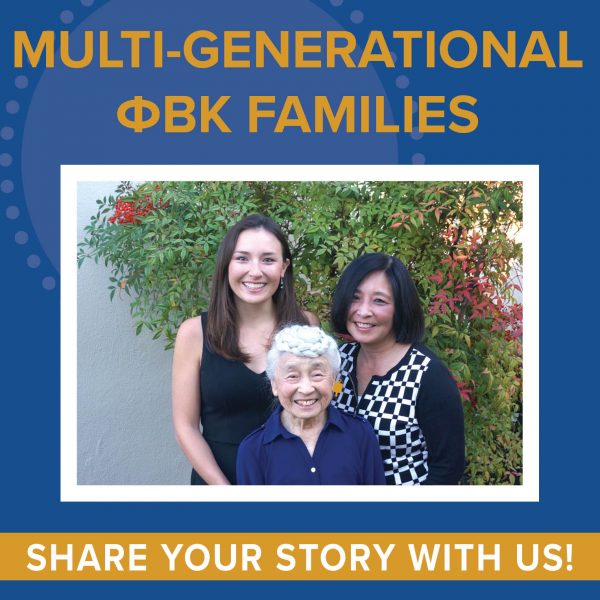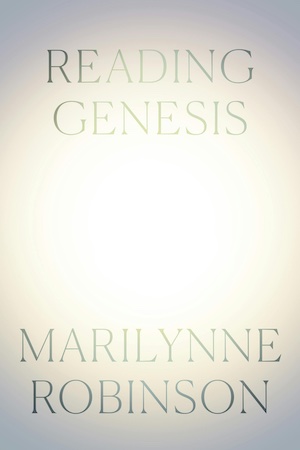By Suzanne Keen
Shortlisted for ΦBK’s 2025 Christian Gauss Award
Not exactly a justification of the ways of God to man, but an apologia nonetheless, Marilynne Robinson’s beautifully written Reading Genesis marvels with gratitude at what she characterizes as the grace inherent in God’s stubborn adherence to his people. She sees Genesis less as a founding epic than as a homely tale, emphasizing the ordinary individuals who have God’s attention—a sometimes discomforting situation. In her gloss, retelling and pondering the episodes of this familiar set of wonderful and weird foundational stories, an emphasis on human psychology makes the legendary figures seem plausibly like us (which is to say, often undeserving). God’s patience, his faithfulness to his people, looms larger by far than those infamous moments where he knocks down a skyscraper, scorches whole cities, or submerges the ecosystem in salt water. In Robinson’s reading of Genesis, God is mind-bogglingly good. Who would put up with the people’s outrageous behavior? God knows, a loving Father would, or a Being playing the long game.
The representative humans of the Chosen People whose lives and generations are narrated in Genesis have God’s loyalty, despite their recurrent trickery, betrayals, crimes, actual or attempted fratricide, and disproportionately violent responses to insults or assaults. This rocky beginning of a story includes not just Creation, but also the first murder, the reset of God’s covenant with Noah after drowning every other land dweller not stowed on the Ark, the first laws, mutually incomprehensible languages as a punishment for a hubristic building project, the gift of fertility so absurd that the old childless couple whose offspring will outnumber the stars laughs out loud in their incredulity, the terrible demand for child sacrifice (rescinded at the last moment), and then generation after generation of the Patriarchs, who are far from well-behaved. All-too-human schemers, women desperate for sons, jealous brothers, captives, victims, exiles, and a real estate magnate who doesn’t hesitate to immiserate a community for its own good: their stories are gathered up and attached to the genealogies of the families who will be led by Moses out of Egypt to the Promised Land. As Marilynne Robinson observes of these stories, they hardly seem to have been passed through the PR office to serve a political agenda or to burnish the reputations of honored forebears. About Tamar’s seduction of Judah (one of the sellers of Joseph), she writes “a creative redactor could have suppressed these embarrassing details.”
I began my reviewing process with the back of Robinson’s book, where she reprints in its entirety the Book of Genesis in the King James Version. At least for liturgical Christians like me, Robinson is correct in her observation of our “habit of reading Scripture piecemeal,” zeroing in on “isolated phrases or verses or episodes” at the expense of attending to the Bible’s structures and recurrent characters. So I read it straight through. This rereading reminded me of my earlier encounters with Genesis. When I was nine, I heard the main events as stories told by Mr Rawlinson, my teacher at a Church of England grammar school. We listened, rewrote what we’d heard in exercise booklets, and drew illustrations with colored pencils: a pale rainbow, a coat for Joseph inflected by early 70s Carnaby Street style. My Abraham and Isaac picture centered on the luckless ram, entangled in the thicket. My Children’s Bible elided much of the unseemliness of the stories, but Mr Rawlinson didn’t bowdlerize. Jacob had sex with the wrong sister. Joseph’s brothers threw him in a pit and soaked his fancy jacket in goat blood. A frank and gentle man, Mr Rawlinson had fought in the Second World War and he told those stories, too: sometimes killing a lot of people is necessary to do the right thing, he taught us. Sodom and Gomorrah had to go.
Despite this largely uncensored introduction to Genesis, reading it again at seventeen I still found it startling and strange, an effect enhanced by reading it alongside the Ancient Near Eastern sources and analogues in a course taught by the appropriately named Mr. Good. Though Robinson’s reading skews towards Christian homiletics and shows little interest in Biblical archaeology, she entertains the overlaps with texts such as the Epic of Gilgamesh, especially the creation and flood stories, that suggest some common materials—if not shared experience—taken up by the Genesis authors. Siding neither with the skeptics nor with boosters of Christian evidences searching Ararat for remains of the Ark, Robinson plumps for reading the Hebrew versions of tales as parables that reveal the nature of God’s relationship with humans. The story of Jacob and Esau, for instance, illuminates the economics of grace as demonstrated by Jesus’s payment of humanity’s debt. Hmm. Are we still doing types and anti-types?
If this sounds a lot like a homily that quickly skips from the first reading with a nod at the psalm to get to the Gospel, that’s not entirely wrong. Robinson makes no bones about her Christian faith and the Pauline stamp that vantage point puts on her reading of Genesis. “Grace” isn’t the usual keyword associated with these Old Testament stories, but she hammers away at them to wedge it in, without resorting to allegorizing, leaning instead into her perceptions as a novelist. Robinson’s attention is trained on the characters of Genesis and the circumstances through which their actions, generation after generation, reveal God’s fulfillment of his promises, all the way through from the Beginning. If at times I felt that the sermon was running rather long, in a book without chapters to facilitate taking a breather, I was grateful for the break from anxiously tallying signs of the Apocalypse from the newsfeeds. It’s good to think about the promises of the beginning, better still to see a rainbow in a sun shower, best of all to remember the potency of hope.
Suzanne Keen (ΦBK, Brown University) is Professor of English at Scripps College. She works on the novel and narrative empathy, most recently in Empathy and Reading: Affect, Impact, and the Co-Creating Reader (Routledge 2022).




